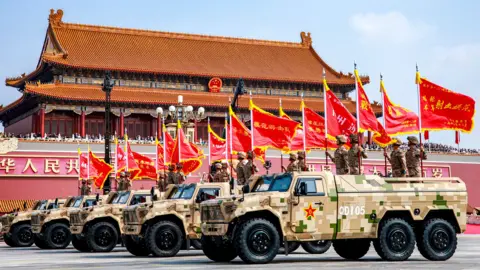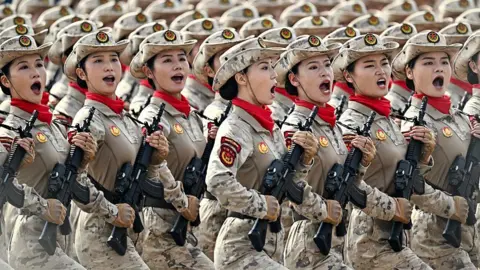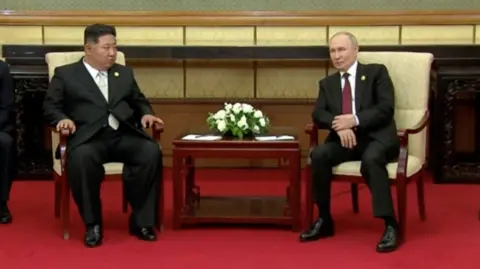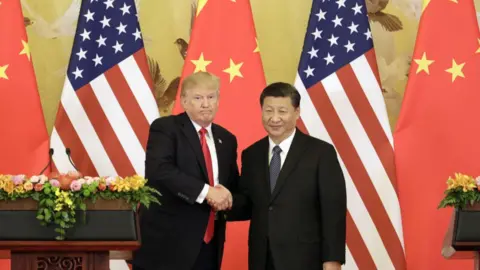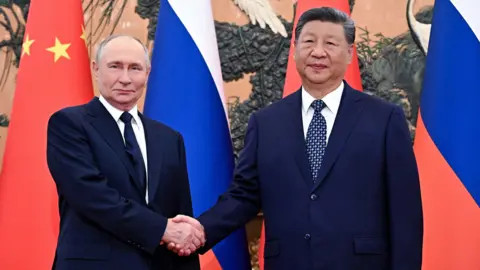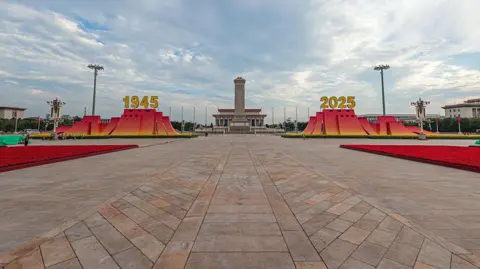As we examine the latest developments, it is clear that China’s economy has shown a remarkable ability to weather external pressures. Recent data indicates that the country has maintained a steady growth rate, with GDP rising by approximately 4.1 percent during the spring months. This resilience can be attributed primarily to significant investments in key infrastructure projects such as high-speed rail systems and a sustained influx of exports.
Interestingly, it appears that the anticipation of tariffs led to an uptick in orders, further boosting economic performance in the first quarter. This proactive behavior from buyers has played a crucial role in lessening the potential negative impacts of the tariffs initially imposed by the Trump administration.
In parallel to China's economic insight, U.S. inflation rates have prompted scrutiny of the consequences of these tariffs, with prices for goods heavily impacted by these duties, notably household items, surging in June.
In a notable policy shift, the Trump administration has also recently lifted restrictions on Nvidia’s A.I. chips, allowing Chinese companies to resume purchases. This U-turn could have profound implications for the tech landscape moving forward.
Moreover, China's regulatory landscape is also evolving concerning electric vehicle (E.V.) manufacturing. The Chinese government announced its intent to impose restrictions on the transfer of eight critical technologies, potentially complicating the efforts of local automakers wishing to expand manufacturing operations beyond its borders, especially in response to pressures from the European Union.
In international relations, Australian Prime Minister Anthony Albanese's recent visit to China highlights the ongoing diplomatic interactions aimed at fostering deeper economic ties despite the looming constraints imposed by the U.S. government.
As the world watches these developments, the intertwining narratives of economic growth and geopolitical strategies continue to unfold, reflecting a complex landscape that shapes future prospects for cooperation and competition on the global stage.
Interestingly, it appears that the anticipation of tariffs led to an uptick in orders, further boosting economic performance in the first quarter. This proactive behavior from buyers has played a crucial role in lessening the potential negative impacts of the tariffs initially imposed by the Trump administration.
In parallel to China's economic insight, U.S. inflation rates have prompted scrutiny of the consequences of these tariffs, with prices for goods heavily impacted by these duties, notably household items, surging in June.
In a notable policy shift, the Trump administration has also recently lifted restrictions on Nvidia’s A.I. chips, allowing Chinese companies to resume purchases. This U-turn could have profound implications for the tech landscape moving forward.
Moreover, China's regulatory landscape is also evolving concerning electric vehicle (E.V.) manufacturing. The Chinese government announced its intent to impose restrictions on the transfer of eight critical technologies, potentially complicating the efforts of local automakers wishing to expand manufacturing operations beyond its borders, especially in response to pressures from the European Union.
In international relations, Australian Prime Minister Anthony Albanese's recent visit to China highlights the ongoing diplomatic interactions aimed at fostering deeper economic ties despite the looming constraints imposed by the U.S. government.
As the world watches these developments, the intertwining narratives of economic growth and geopolitical strategies continue to unfold, reflecting a complex landscape that shapes future prospects for cooperation and competition on the global stage.










